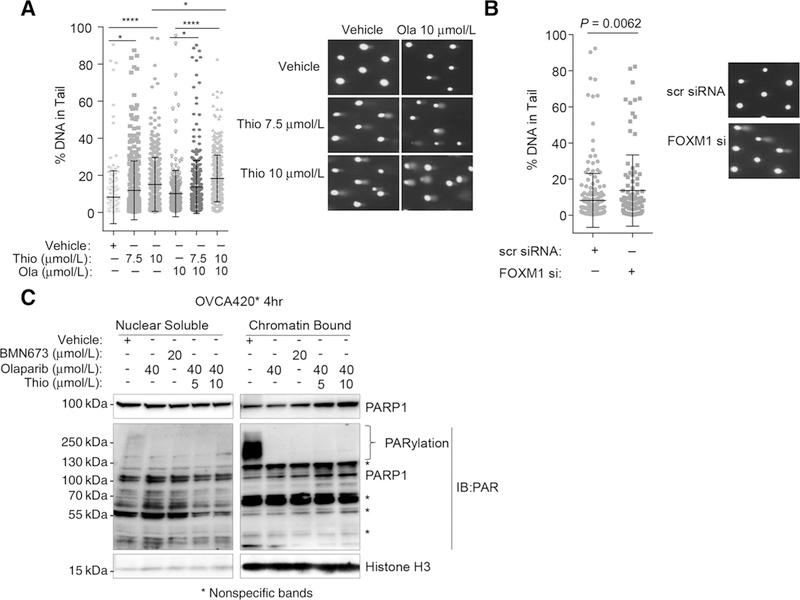Figure 6.

Thiostrepton enhances DNA damage and increases PARP1 trapping onto chromatin after olaparib treatment. A, Thiostrepton and olaparib increase DNA damage in OVCA420* cells. OVCA420* cells were pretreated with vehicle, 7.5 μmol/L, or 10 μmol/L thiostrepton for 4 hours in 6-well plates before trypsinizing and seeding onto CometChip. Then cells were treated with vehicle, 7.5 μmol/L, or 10 μmol/L thiostrepton and olaparib (10 μmol/L) for another 4 hours. Comets were analyzed with Trevigen Comet Analysis Software after imaging under a 4 x fluorescent microscope. Data were shown as percent of DNA in comet tail. Representative comet images were shown on the right. The significance analysis was performed with one-way ANOVA. *, P ≤ 0.05; **, P ≤ 0.01; ***, P ≤ 0.001; ****, P ≤ 0.0001. Results represent experiments performed in triplicates. B, FOXM1 knockdown with siRNA increases DNA damages in Comet assay. Seventy-two hours after the FOXM1 knockdown, OVCA420* cells were trypsinized and seeded for comet assay using Trevigen CometChip Kit. Representative images were shown on the right. C, Thiostrepton increases PARP1 trapping onto chromatin. OVCA420* cells were treated with indicated concentrations of PARP inhibitors, olaparib or BMN673, alone or in combination with thiostrepton for 4 hours and fractionated as nuclear soluble and chromatin-bound fractions. The lysates were blotted first with PARP1 antibody and secondly with PARP antibody. ** shown as nonspecific bands. Results were from a representative of two independent experiments.
